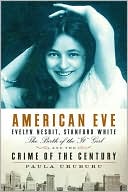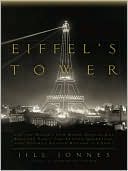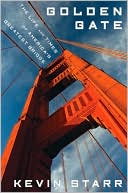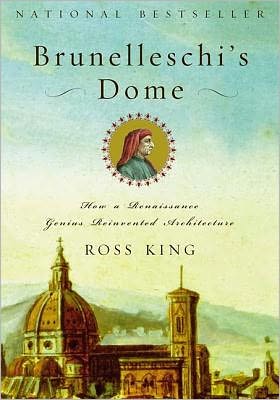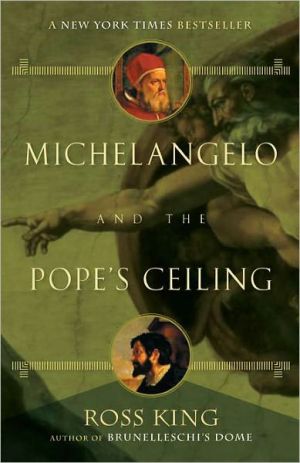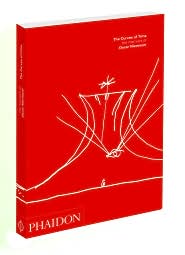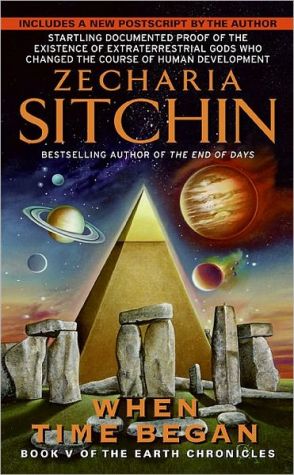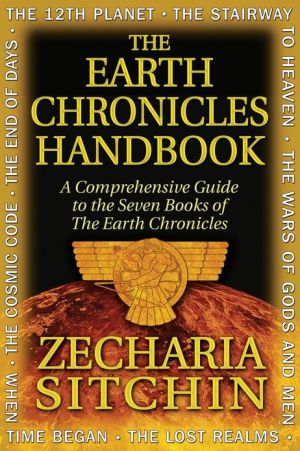Sistine Secrets: Michelangelo's Forbidden Messages in the Heart of the Vatican
The Shocking Secrets of Michelangelo's Sistine Chapel Artwork\ The recent cleaning of the Sistine Chapel frescoes removed layer after layer of centuries of accumulated tarnish and darkness. The Sistine Secrets endeavors to remove the centuries of prejudice, censorship, and ignorance that blind us to the truth about one of the world's most famous and beloved art treasures.
Search in google:
The Shocking Secrets of Michelangelo's Sistine Chapel Artwork The recent cleaning of the Sistine Chapel frescoes removed layer after layer of centuries of accumulated tarnish and darkness. The Sistine Secrets endeavors to remove the centuries of prejudice, censorship, and ignorance that blind us to the truth about one of the world's most famous and beloved art treasures.Los Angeles Times“…(a) fascinating study of the Sistine Chapel. […] Like the best art historians, the authors give us a fresh context for the times, never hesitating to make contemporary parallels. […]This is a stimulating exploration that makes familiar masterpieces seem strange and new.”
The Sistine Secrets\ Michelangelo's Forbidden Messages in the Heart of the Vatican \ Chapter One\ What is the Sistine Chapel?\ \ And let them build for Me a Sanctuary, that I may dwell in their midst.\ —Exodus 25:8\ \ On February 18, 1564, the Renaissance died in Rome.\ Michelangelo di Lodovico Buonarroti Simoni, known to all simply as Michelangelo, passed away at age eighty-nine in his frugal home in what is today Piazza Venezia. His body was prepared to be entombed inside the nearby Basilica of the Holy Apostles. Today, this church, Santissimi Apostoli, is an amalgam of many times and styles: its top floor is from the nineteenth century, the middle floor is seventeenth-century Baroque, and the ground floor is pure Renaissance from the second half of the fifteenth century. But what is most interesting about Michelangelo's intended burial place is that the original part of the church—the only part that existed in 1564—was designed by none other than Baccio Pontelli, the same man who planned the structure of the Sistine Chapel. The church where Michelangelo was supposed to be entombed is important for other reasons as well.\ In a crypt beneath the ground-floor level of the church are the tombs of Saints James and Philip, two of the apostles going back to the life of Jesus. Deeper still, if we were allowed to dig beneath the crypt, we would soon come upon remains of ancient Imperial Rome, beneath that, Republican Rome, and finally, perhaps some of Bronze Age Rome.\ This makes the church a metaphor for the entire Eternal City: a place of layer upon layer ofhistory, of accumulations of countless cultures, of confrontations between the sacred and the profane, the holy and the pagan—and of multiple hidden secrets.\ To understand Rome is to recognize that it is a city swarming with secrets—more than three millennia of mysteries. And nowhere in Rome are there more secrets than in the Vatican.\ The Vatican\ The very name Vatican comes from a surprising source. It is neither Latin nor Greek, nor is it of biblical origin. In fact, the word we associate with the Church has a pagan origin. More than twenty-eight centuries ago, even before the legendary founding of Rome by Romulus and Remus, there was a people called the Etruscans. Much of what we think of as Roman culture and civilization actually comes from the Etruscans. Even though we are still trying to master their very difficult language, we already know a great deal about them. We know that, like the Hebrews and the Romans, the Etruscans did not bury their dead inside the walls of their cities. For that reason, on a hillside slope outside the confines of their ancient city in the area that was destined to become Rome, the Etruscans established a very large cemetery. The name of the pagan Etruscan goddess who guarded this necropolis, or city of the dead, was Vatika.\ Vatika has several other related meanings in ancient Etruscan. It was the name of a bitter grape that grew wild on the slope, which the peasants made into what became infamous as one of the worst, cheapest wines in the ancient world. The name of this wine, which also referred to the slope where it was produced, was Vatika. It was also the name of a strange weed that grew on the graveyard slope. When chewed, it produced wild hallucinations, much like the effect of peyote mushrooms; thus, vatika represented what we would call today a cheap high. In this way, the word passed into Latin as a synonym for "prophetic vision."\ Much later, the slope became the circus, or stadium, of the mad emperor Nero. It was here, according to Church tradition, that Saint Peter was executed, crucified upside down, and then buried nearby. This became the destination of so many pilgrims that the emperor Constantine, upon becoming half-Christian, founded a shrine on the spot, which the Romans continued to call the Vatican Slope. A century after Constantine, the popes started building the papal palace there.\ What does "the Vatican" mean today? Because of its history, the name has a number of different connotations. It can refer to the Basilica of St. Peter; to the Apostolic Palace of the popes with more than fourteen hundred rooms; to the Vatican Museums complex with more than two thousand rooms; to the political/social/religious hierarchy that is considered the spiritual leadership of about one-fifth of the human race; or to the world's smallest official country of Città del Vaticano (Vatican City). It is indeed strange to consider that this tiniest country on earth, which could fit eight times over inside Central Park in New York City, contains within it the world's largest and costliest church, the world's largest and most luxurious palace, and one of the world's largest museums.\ Replacing the Temple\ Most fascinating of all, though, may well be a place within the ancient fortress walls of Vatican City whose symbolic meaning is unknown to almost all its visitors. Its theological significance can best be realized by noting that this Catholic effort was something explicitly forbidden to Jews. In the Talmud, the ancient holy commentaries of the greatest Jewish sages spanning more than five centuries, it is clearly legislated that no one may construct a functioning full-sized copy of the Holy Temple of Jerusalem in any location other than the Temple Mount itself (Tractate Megillah, 10a). This was decreed in order to avoid any possible bloody religious schisms, such as later happened in Christianity (Roman Catholicism; Eastern and Greek Orthodoxy; Protestantism—and their centuries of internecine warfare) and Islam (Sunni and Shi'ite, who are sadly still killing each other around the globe).\ Six centuries ago, however, a Catholic architect who was not constrained by Talmudic laws did exactly that. He designed and built an incredible, full-sized copy of the inner sanctum, or the Holy of Holies, of King Solomon's Temple in Jerusalem—right in the middle of Renaissance Rome. To get the measurements and proportions exactly correct, the architect studied the writings of the prophet Samuel in the Hebrew Bible, where Samuel describes the First Holy Temple, cubit by cubit (1 Kings 6:2). This massive reproduction of the heichal, or rear section of the First Temple, still exists today. It is called la Cappella Sistina—the Sistine Chapel. And this is where more than four million visitors a year come to view the incredible frescoes of Michelangelo and pay homage to a site sacred to Christianity.\ The Sistine Secrets\ Michelangelo's Forbidden Messages in the Heart of the Vatican. Copyright © by Benjamin Blech. Reprinted by permission of HarperCollins Publishers, Inc. All rights reserved. Available now wherever books are sold.
Foreword viiPreface xvIn the BeginningWhat Is the Sistine Chapel? 3The Lost Language of Art 23A Rebel Is Born 41A Very Special Education 46Out of the Garden and into the World 74As Fate Would Have It 104A Private Tour of the Sistine TempleCrossing the Threshold 129The Vault of Heaven 137The House of David 144The Four Corners of the Universe 157A Company of Prophets 168The Middle Path 187Parting Shots 213Beyond the CeilingBack on the Scene 235Secrets of The Last Judgment 248Later Secrets 273"A World Transfigured" 282Conclusion: So, What Is the Sistine Chapel? 292Acknowledgments 307Notes 309Bibliography 311Illustration Credits 312Index 313
\ From Barnes & NobleOn May 10, 1508, Michelangelo signed a Vatican contract to create frescoes for the ceiling of the Sistine Chapel. The original plan, calling for 12 large portraits of the Apostles, was rejected by the artist; he replaced it with a much more elaborate scheme, finally comprising approximately 300 figures. In The Sistine Secrets, Rabbi Benjamin Blech addresses the most vexatious question about this much-discussed masterpiece: Why is there not a single Christian image in this enormous artwork? Using recently discovered primary materials, Blech describes Michelangelo's secret involvement in an underground movement of interfaith freethinkers and Kabbalists. A groundbreaking history on the 500th anniversary of the majestic Sistine Chapel.\ \ \ \ \ Los Angeles Times“…(a) fascinating study of the Sistine Chapel. […] Like the best art historians, the authors give us a fresh context for the times, never hesitating to make contemporary parallels. […]This is a stimulating exploration that makes familiar masterpieces seem strange and new.”\ \ \ The Jewish Press“The journey of analysis of the complex images rewards the reader with many profound insights about the artwork and the complex nature of Michelangelo’s ideas....fascinating and engaging!”\ \ \ \ \ Manchester Evening News (U.K.)“Fascinating.... Benjamin Blech and Roy Doliner appear to have few equals when it comes to the history and detail of the fresco.... a readable and informative piece of work.”\ \ \ \ \ Enrico Bruschini"Just as the work of Michelangelo in the Sistine Chapel changed forever the world of art, so will this book change forever the way to view and, above all, to understand the work of Michelangelo!"\ \ \ \ \ Jonathan Harr"This book of astounding revelations is built on careful scholarship, lucid exposition, and it is, above all, compelling reading."\ \ \ \ \ The Jewish Press"The journey of analysis of the complex images rewards the reader with many profound insights about the artwork and the complex nature of Michelangelo’s ideas....fascinating and engaging!"\ \ \ \ \ Los Angeles Times"…(a) fascinating study of the Sistine Chapel. […] Like the best art historians, the authors give us a fresh context for the times, never hesitating to make contemporary parallels. […]This is a stimulating exploration that makes familiar masterpieces seem strange and new."\ \ \ \ \ Manchester Evening News (U.K.)"Fascinating.... Benjamin Blech and Roy Doliner appear to have few equals when it comes to the history and detail of the fresco.... a readable and informative piece of work."\ \

